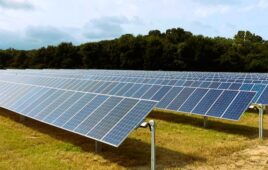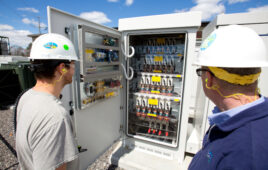This installation tip was provided by Milton Nogueira, senior business development manager for Roof Tech
Temperature ranges affect more than just a solar panel’s performance. Temperature swings can break down racking and flashing durability, especially on hot roofs in the summertime. Understanding how everyday exposure to the elements affects even small pieces of the solar project will ensure a system outperforms its warrantied lifespan.
An array can reach 60°F above the ambient temperature, which is important when considering the expansion and contraction of aluminum racking.

After 7,500 hours of weather testing, the butyl on the left has retained its elasticity, while the sealant on the right is cracked.
For example, if a PV system is exposed to 90°F heat during the day and 50°F temperatures overnight, 30-ft aluminum rails feel a variance from 50°F to 150°F (with the 60°F above ambient temperature consideration). The variation (expansion/contraction) of the aluminum rail is between 3/8 in. and 1/2 in. in length. When these movements occur day-in and day-out for the 25-year usable life of the PV system, one can only imagine the forces imposed on the mounting screws or lags attached to the roof and its sealants.
This constant movement will not only have a negative impact on the structure, but also on the waterproofing system. For thermal splices, installers should refer to the installation manuals for the different manufacturers. For the Roof Tech L-foot option, the maximum length recommended between thermal splices (rail split) is every 12 to 14 ft.
Temperatures also affect flashing and sealants. There are a variety of sealants on the market, so one should be sure the appropriate sealant is used for the specific substrate while also considering service temperatures. Common asphalt roof sealants can have an upper service temperature anywhere between 165°F to 200°F. Because roof temperatures can reach 200°F, a sealant with a lower service temperature could fail sooner.
Roof Tech uses butyl rubber in its flashing as it retains its elasticity under extreme weather testing. Other sealants may crack after constant temperature swings, but butyl rubber has a service temperature operating range between -40°F and 248°F.
Correct thermal splicing and sealant/flashing choices will help a solar array survive the normal temperature ranges of a U.S. location.




Tell Us What You Think!